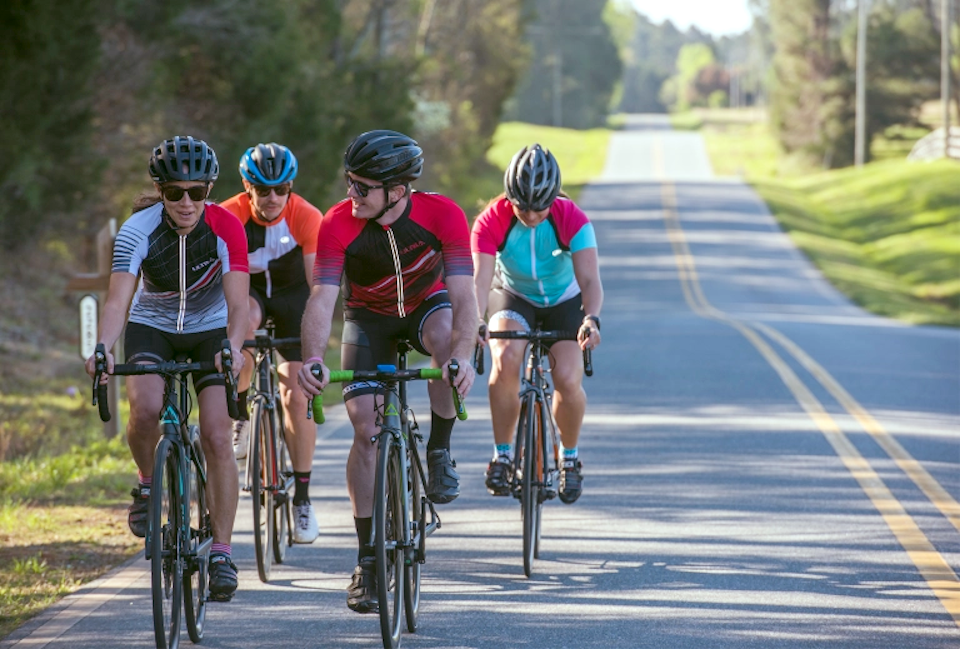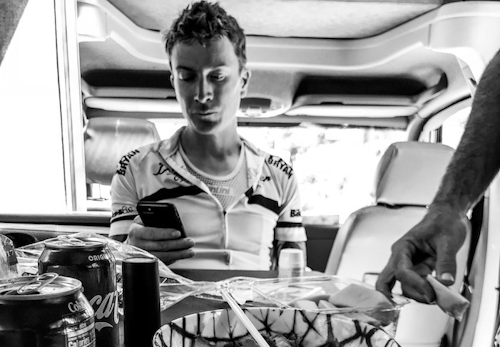Road Cycling: Smart Tips for Safe Rides
If you’re a cyclist who rides on public roads and you told us you’d never had a bad experience, we’d find that claim a little hard to believe. But even if you are one of the fortunate few who’ve managed to avoid a harrowing experience of your own, you’ve undoubtedly heard at least one story of someone who has

Since you’re reading this blog, we assume these experiences haven’t scared you away from riding outside. Even if you prefer training indoors, your next event is almost certainly outside. With that in mind, outdoor training will be essential to maximising your race day performance. This presents an element of risk, so we’re sharing a few tips to help you steer clear of potential incidents.
Covered in this blog:
- Pick the right road for your ride
- Terrain
- Condition
- Weather
- Other road users
- Protecting yourself
- Being courteous
- Group riding
- Safety
- Etiquette
Choose the right road for your ride
It goes without saying that one of the biggest factors in remaining safe on public roads is the road itself — but we’ll say it anyway. Depending on where you ride, relying purely on your map reading skills can lead to unexpected challenges, so taking the time to learn which roads are safe and which are not is always a good idea.
You’re probably familiar with which roads are more suitable for cyclists close to home, but when you travel, consider reaching out to local clubs or bike shops for advice. Aside from simply avoiding dangerous roads, you should always consider the terrain, conditions, and weather when riding outside.
Terrain
Think about the terrain and type of road you will be riding. You’ll want to choose a road suited for your ability, but it needs to be suited for your bike as well. If you’re riding a road bike, gravel and potholes can cause major problems. If you’re pedalling a heavy trail bike, steep climbs can present more of a challenge than you want to tackle.
Walking your bike up steep hills and narrow roads with heavy traffic can put a real downer on your ride, so we recommend looking up the route online before you venture out. No matter where you ride, always take a fully charged phone with you, so you can find an alternative route if necessary. As a general rule, if you are unsure about whether you can ride safely, turn back. Better safe than sorry.
Conditions
Even when you can be sure your route is completely paved, that doesn't guarantee the road condition is good enough to ensure a safe ride. We all know local roads that we avoid for this reason, but as we venture further away, it becomes more difficult to be certain.
The fully charged phone we mentioned earlier might help with finding a new route, but sometimes it isn’t feasible to turn back. Other times, there are simply no alternate routes. This is why we recommend carrying a fully stocked bike maintenance kit with you as a precaution. Sure, there might be a freak issue that can’t be fixed, but most challenges caused by poor road conditions can be solved with basic tools and a little know-how. A well-stocked saddle bag with inner tubes, tire levers, patch kits, and multi-tools can be the difference between a short repair and a long walk.
Weather
Check the weather forecast before you hit the road! Even if it is highly unlikely you will encounter adverse weather conditions, check it anyway. It only takes a few seconds and could save you a miserable day on the bike.
While it’s never a good idea to ride in dangerous weather conditions, sometimes you get caught off guard when the weather turns. Mountainous areas are infamous for having micro-climates where heavy rain comes in suddenly and unreported. When this happens, base layers and weatherproof jackets are your friends. Fortunately, most all-weather jackets and vests can be packed down and slipped into your jersey pocket with ease.
Share the road safely
Unless you live in the middle of nowhere, it’s almost inevitable that you will encounter other road users (cars, trucks, runners, other cyclists, etc.) when you ride outside. This means the incident risk will never be zero, but there are some precautions you can take to protect yourself from others who are on the road with you.
Protect yourself
You can keep yourself safest by paying attention to where you ride on the road and how visible you are to others.
While you don’t want to ride in the middle of the road and force drivers to “close pass” you, you shouldn’t ride the gutter either. While it might seem safer to ride as far away from vehicles as possible, it allows drivers more room to think they can squeeze through. Should something — or someone, if you’re riding in a residential area — dart into your path, you might have to take evasive action into the path of a vehicle. On any road, riding defensively will help keep you safe.
Bright flashing lights and vibrant clothing will help you stand out and stay safe! Even during daylight, we recommend you have working lights mounted on the front and rear of your bike. Additionally, we suggest wearing a brightly coloured kit to make yourself as visible as possible. The combination of lights and bright apparel should help most drivers see you from greater distances, greatly reducing your chance of being hit by a distracted driver.
Be courteous
While you want to protect yourself at all costs, it’s essential that you always remain thoughtful of others who are using the same roads.
This simple act of being courteous can help change the perception of cyclists. While the vast majority of drivers are thoughtful and patient, there will always be some that don’t care because they’ve been stuck behind a cyclist who was rude to them in the past.
Thanking patient drivers, obeying the rules of the road, and pulling out the way if traffic that’s building up behind you will go a long way to improving the perception of cyclists, which in turn should help reduce incidents where drivers ‘retaliate’ against cyclists.
Keys to a successful group ride
There’s strength — and safety — in numbers! While there have been a few incidents of cycling groups hit by distracted drivers, there really is more safety in numbers. While you may enjoy a peaceful solo ride, riding with a group is one of the best ways to ensure you remain safe.
Group size
If you’re new to group riding, our best advice is to start small and build up to a point where you are more confident riding in big groups. Small groups of friends with similar abilities are a great place to start. Ride with people who are familiar with group riding and ask them for advice. It’s important to be aware that different places will have different rules when riding in groups, so be sure to know the rules for your group.
Team etiquette
Ride etiquette varies from group to group. Who has the right of way in the group? What are the right warnings or messages to shout to others? Which obstacles should you point out? All of these can be different based on the people riding together. A quick chat with one of the ride leaders should help you understand the polite way to ride with this group.
Join a Humango Group
While virtual riding hasn’t quite figured out how to perfect group riding technique or etiquette, you can experience all the other benefits of group cycling with Humango Groups. Join Groups that focus on training for Gran Fondos’ or create a virtual team for you and your friends.
Coach Pav
Coach Pav is an Amazon #1 New Release Author and a coach to clients who have set world records (Mark Beaumont), earned their world champion jersey (Steve Bate MBE), and won ultra-cycling events (Matt Seward and Thomas Becker).
Mostly, his clients are those riding a Gran Fondo or two, and some are even riding his personal favorite: the Maratona dles Dolomites.
